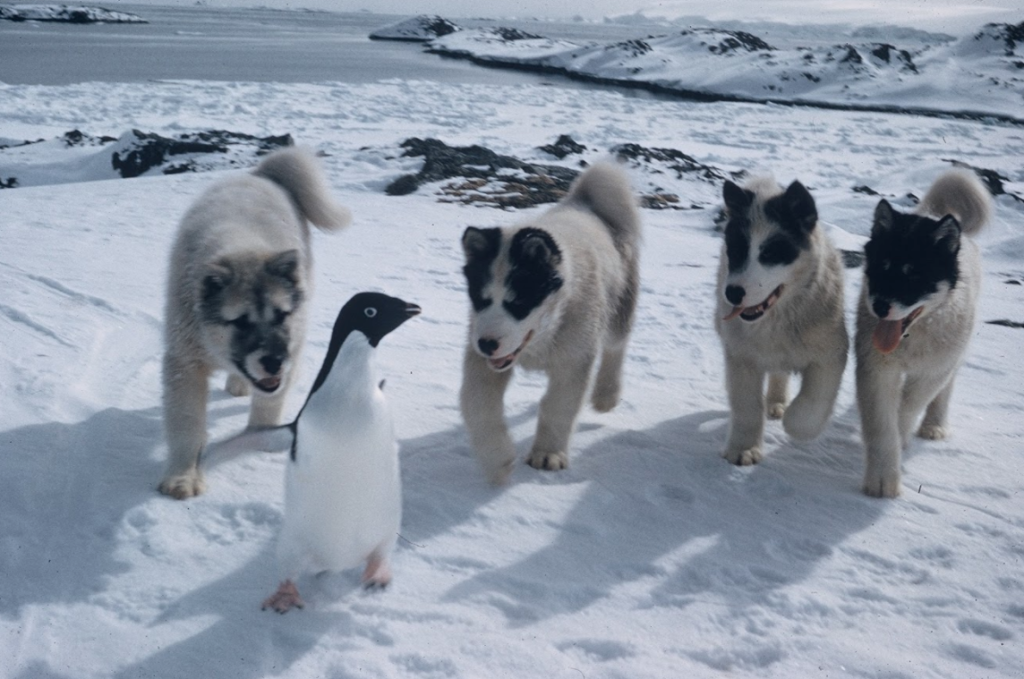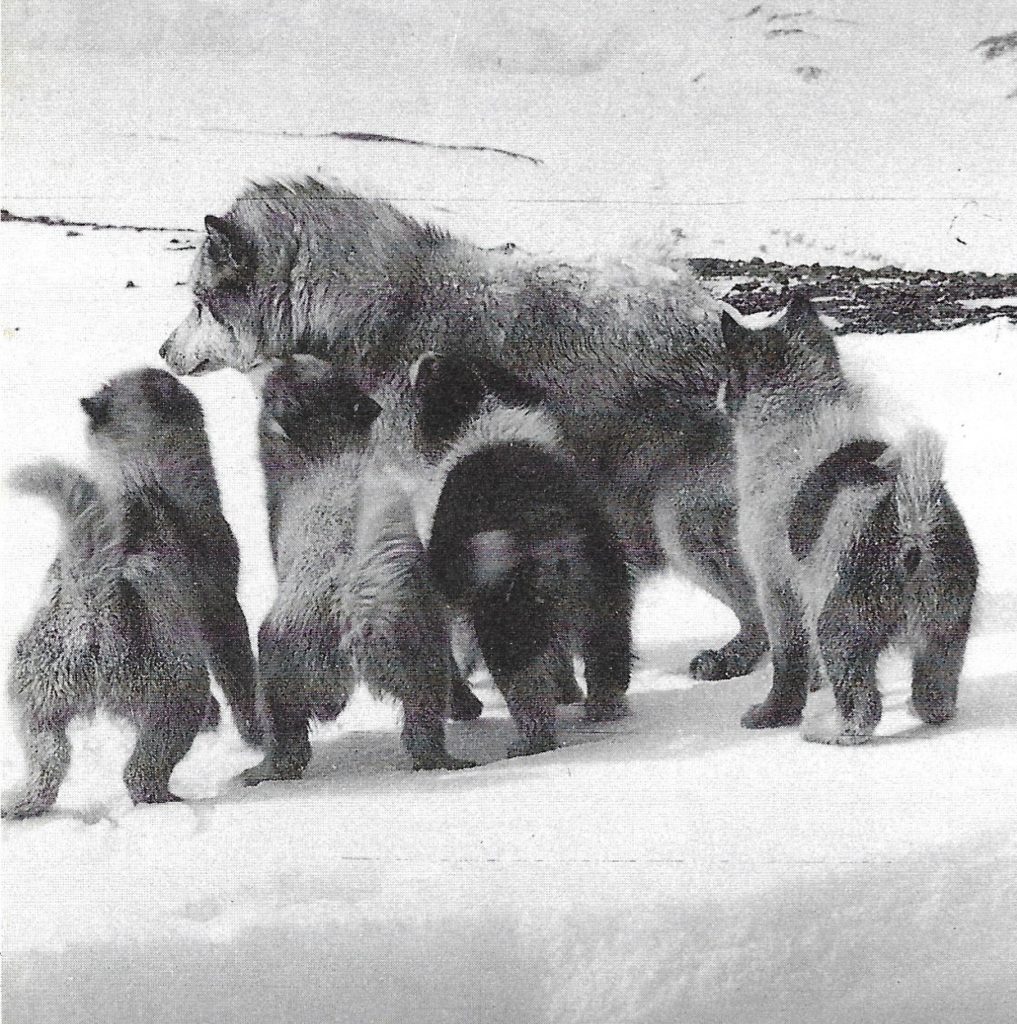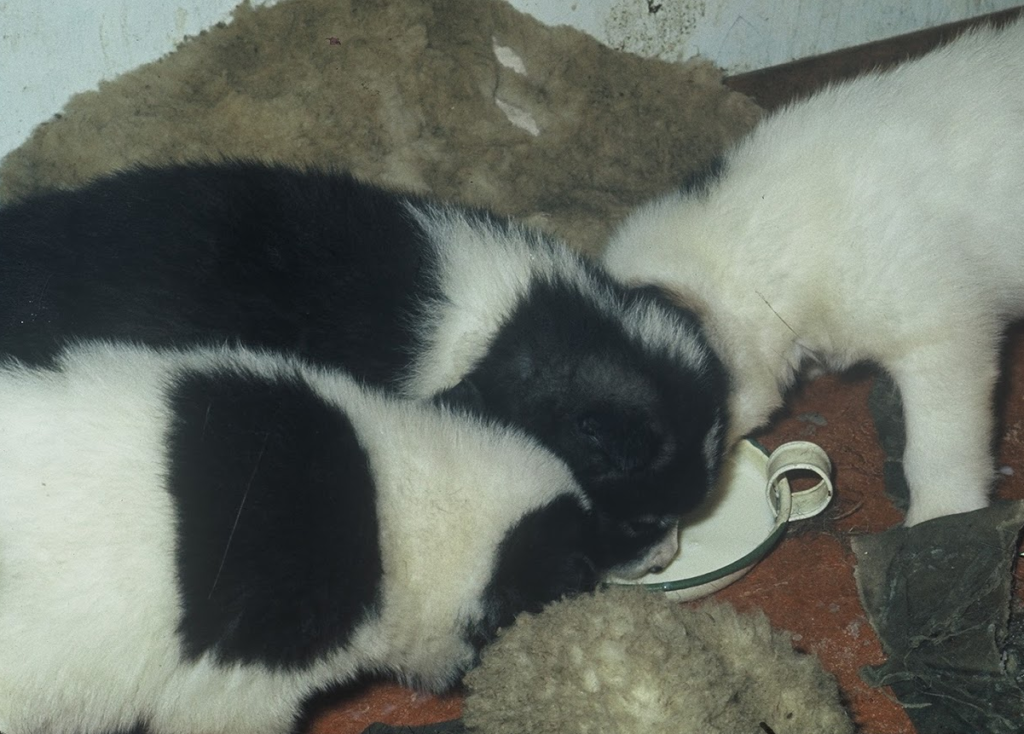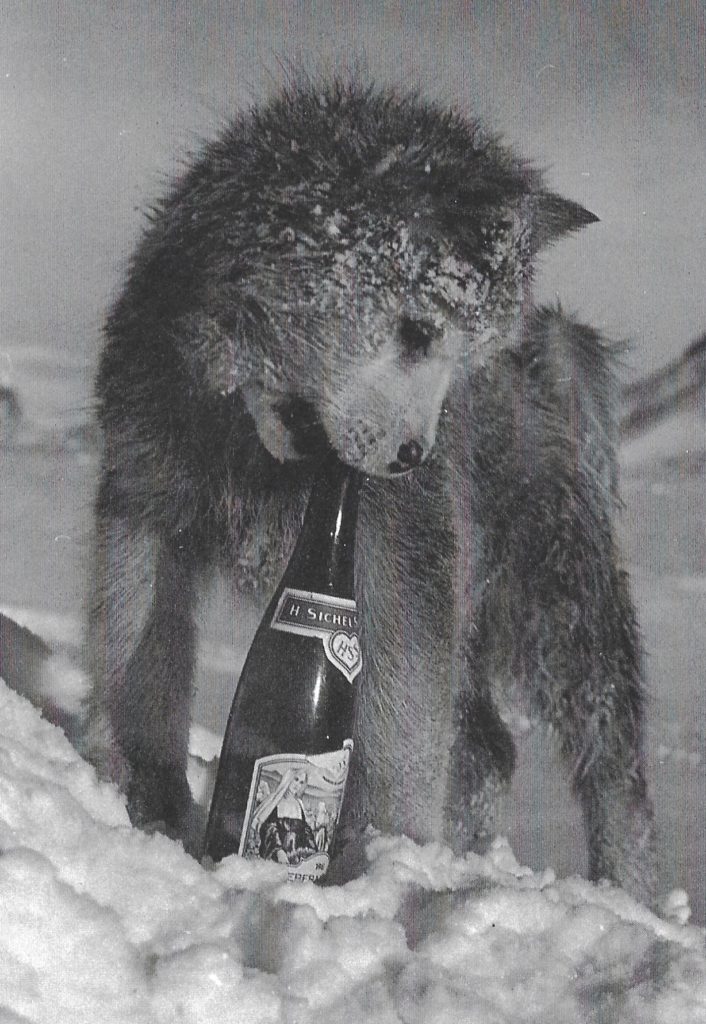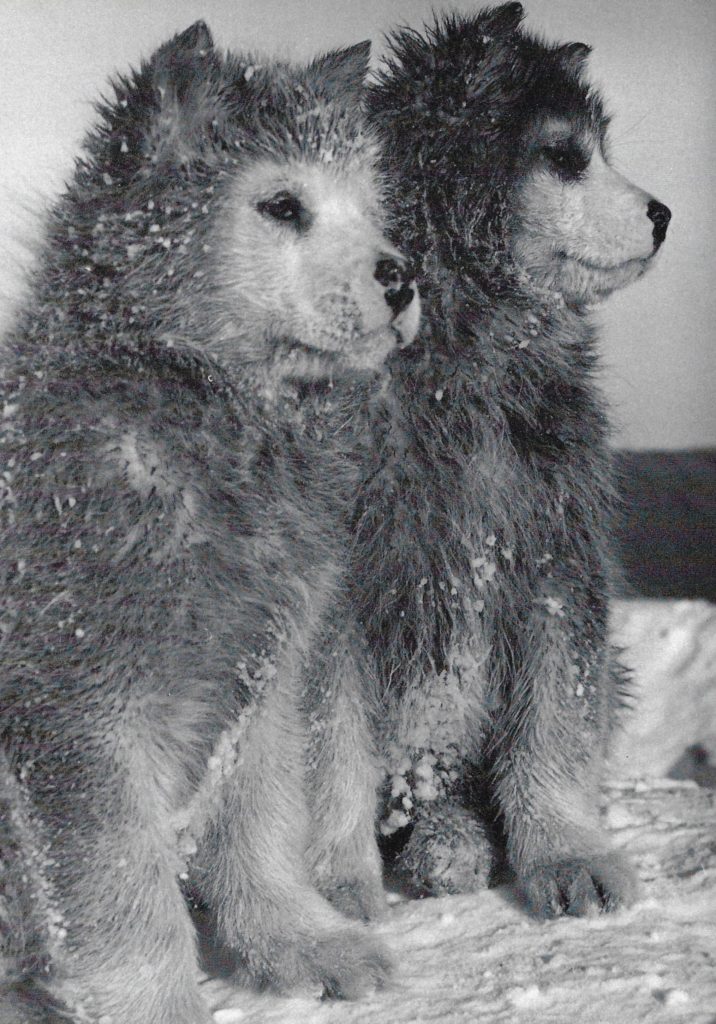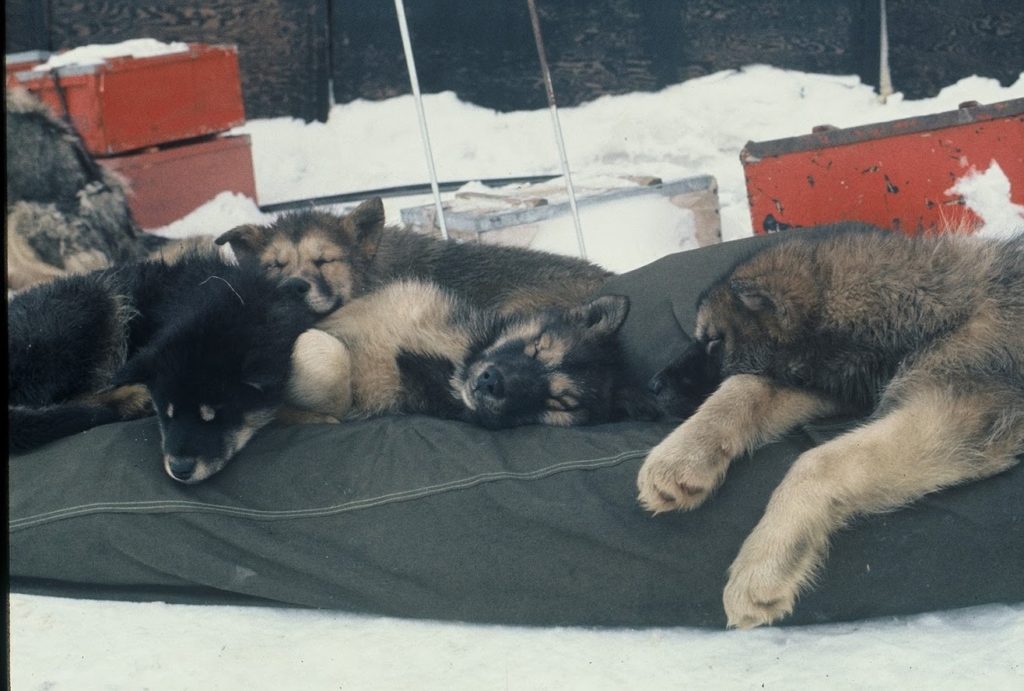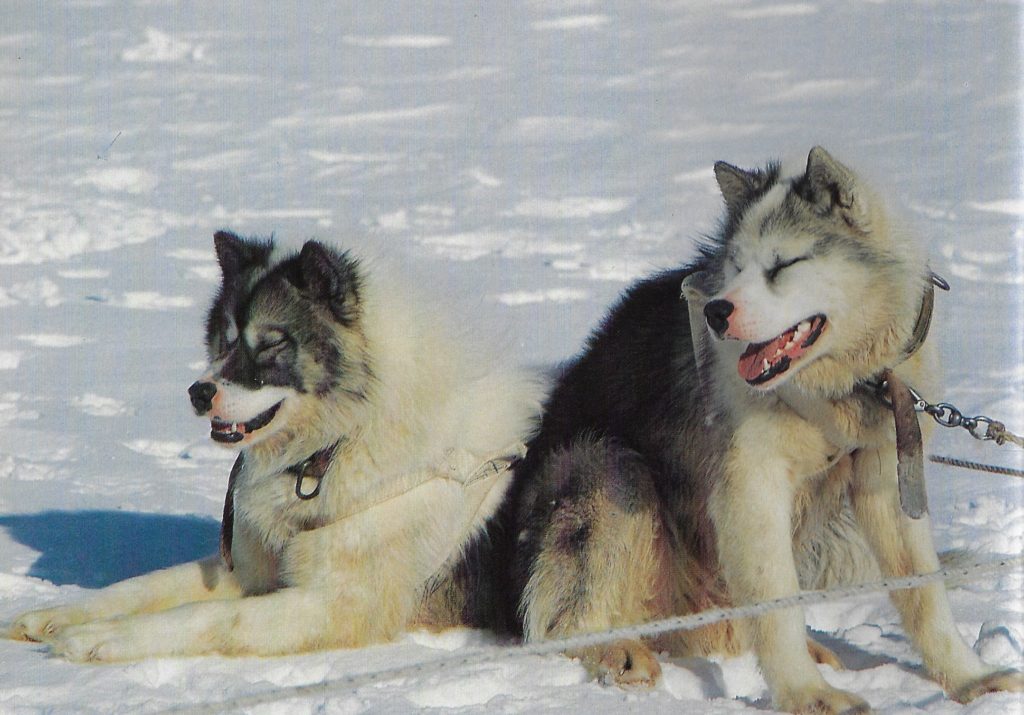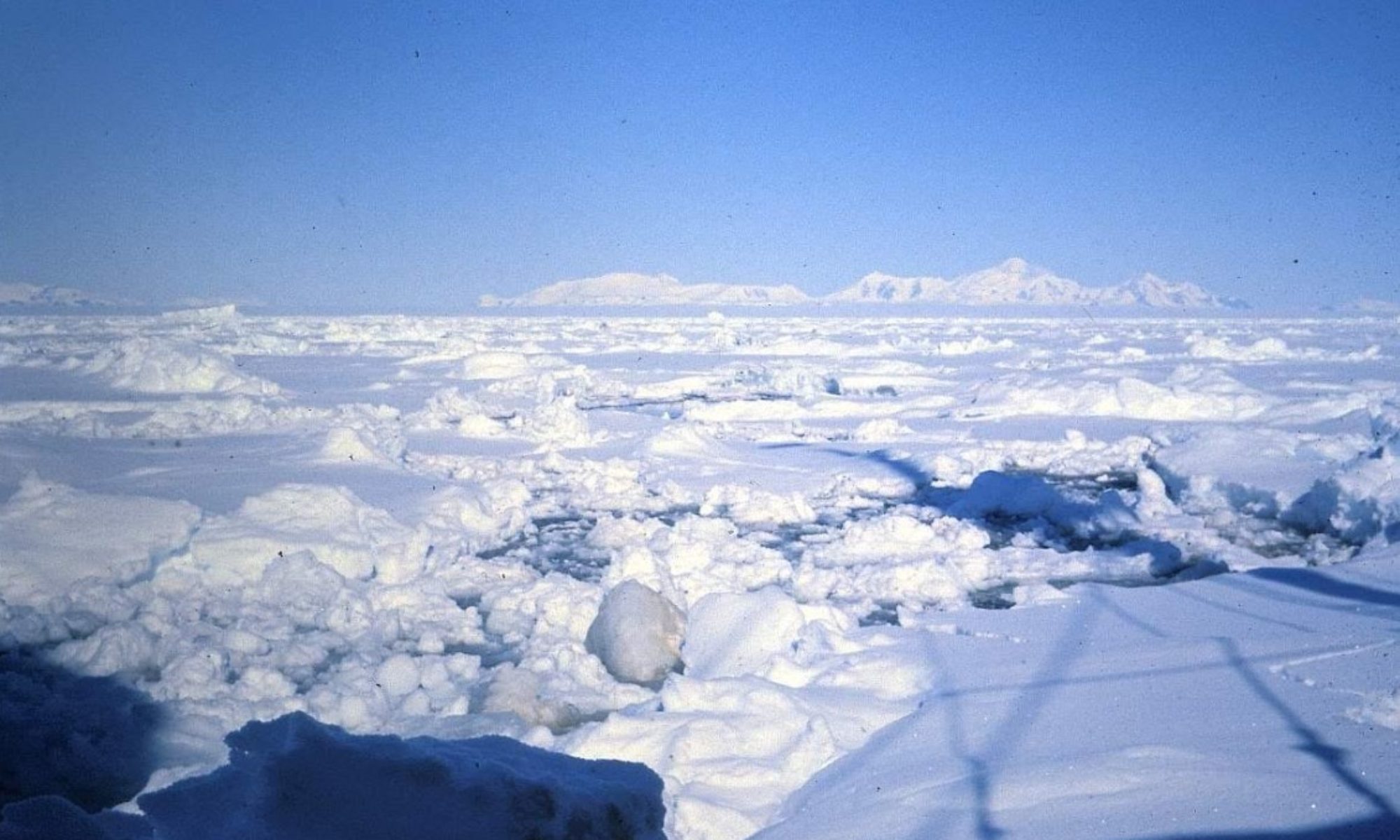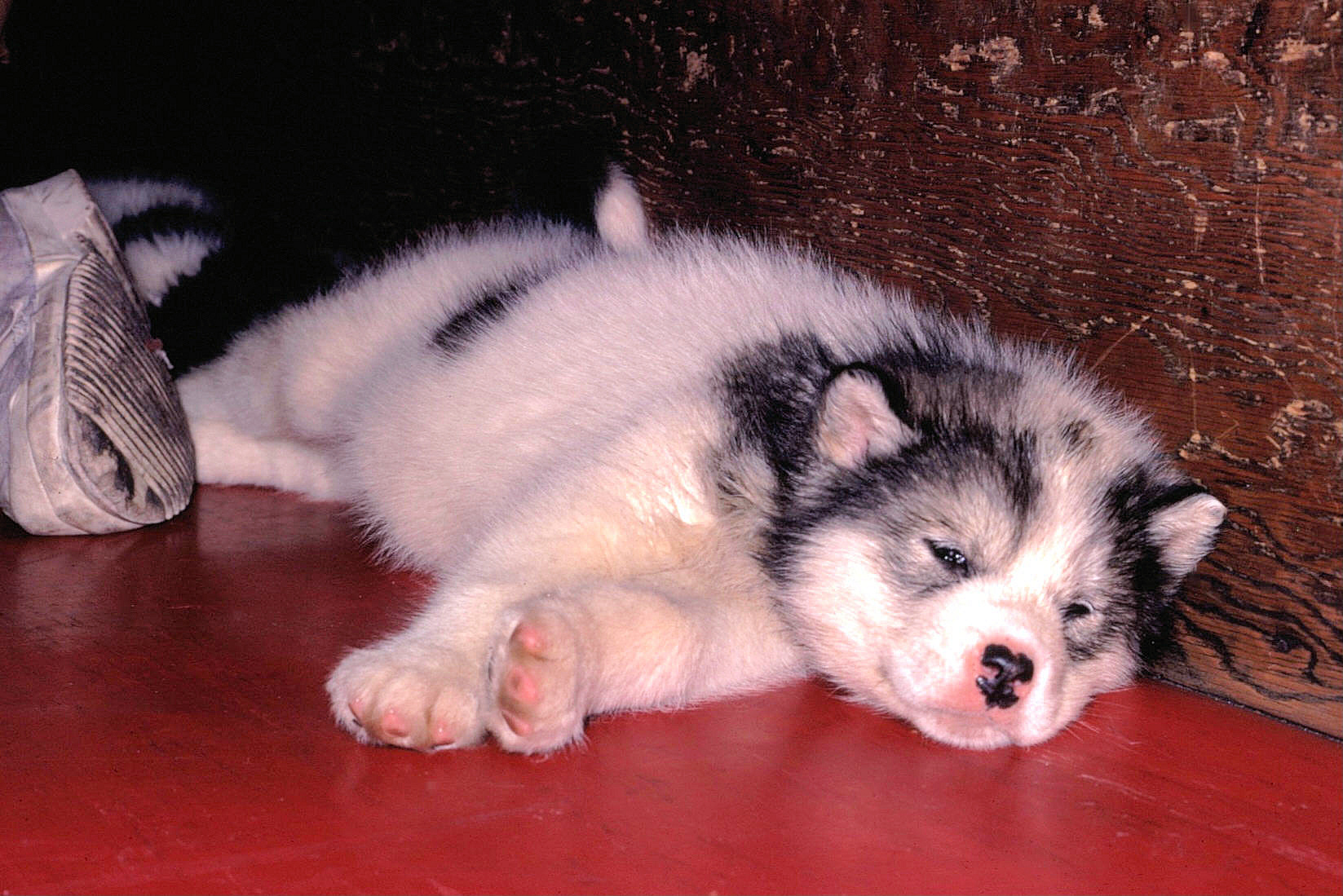Knackered after a Hard Day’s Play (Photo: Bill Taylor)
Pups played noisily on the roof of the hut, stealing food, chewing anything they found lying around, and generally getting in everyone’s way. They were a major nuisance as well as being the biggest boost to morale any Antarctic base could have.
Gordon McCallum
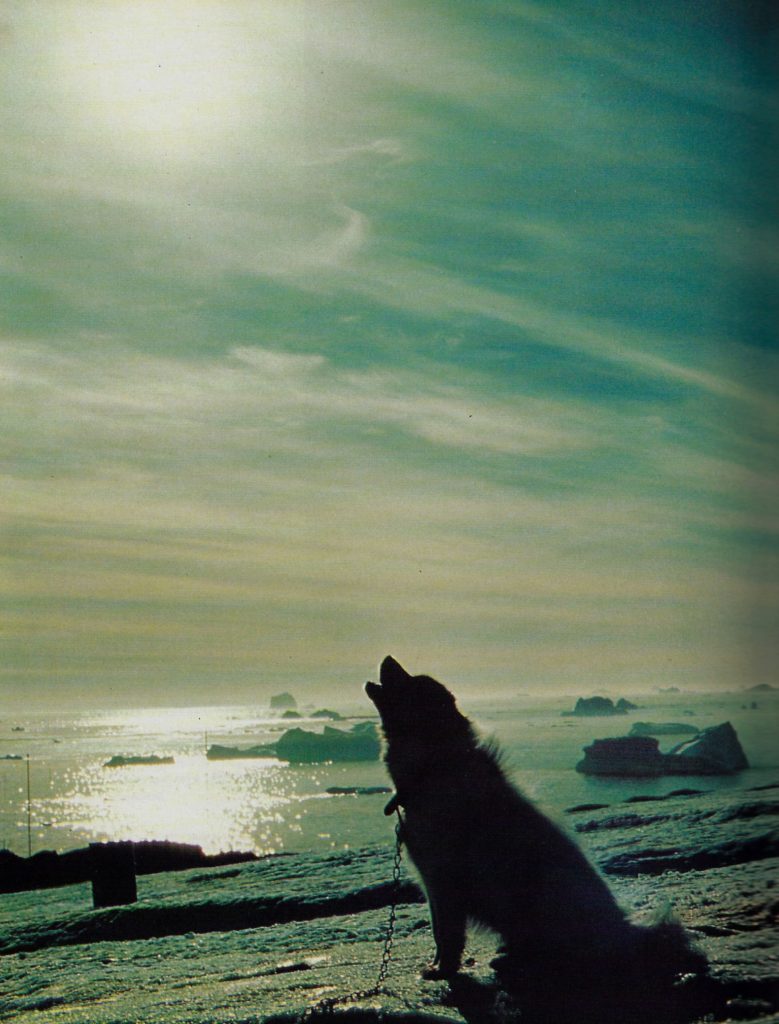
Dogs
Below is the link to the Family Tree of all BAS Huskies, the culmination of years of hard work by Brigid Wainwright from 2000 to 2011 when ill-health intervened. Wonderful job Brig!
There are some minor errors and duplications, with the data being only as good as the Dog Cards held and supplied by BAS. It is meant to be an archive for interest and entertainment only, not for critical review, although we will certainly correct any correctable errors if we are advised of any. We can’t add any dogs that are not there.
We will upload any good-quality color photos of individual dogs supplied by drivers – soon we hope to be able to add the related Dog Cards also. For a start, add “Myff” to the box at the bottom which probably shows “1262”, and click her name to open it, and you’ll see how it works; try tweaking the number of generations, siblings etc, and then try one of your own dogs. Happy Reminiscing!
Dog Cards in Alphabetical Order
eMail Request for access to Dog Cards: [email protected]
BAS Teams – Histories & Photos
- Admirals (Steve Wormald, Brian Hill)
- Amazons
- Beatles
- Choristers (Bernard Stonehouse)
- Churchmen
- Citizens
- Counties
- Darkie & Co
- Debs
- Gaels
- Gangsters
- Giants
- Girls
- Hairybreeks
- Hobbits
- Huns
- Komats (Neil Marsden)
- Ladies (Dave Singleton)
- Mobsters
- Moomins
- Number Ones
- Orange Bastards
- Picts (Rod Pashley, John Yates)
- Players
- Rabble (Bill Taylor)
- Spartans (Ian McMorrin)
- Terrors (Noel Downham, Geoff Renner, Dave Matthews, Steve Wormald)
- Trogs
- Vikings
- Wags
The British Antarctic Survey Dog Monument

These bronze castings of a Husky dog and plaque featuring the names of the dog-teams of Falkland Islands Dependencies Survey (F.I.D.S) and British Antarctic Survey (B.A.S) stand outside of The Polar Museum at Scott Polar Research Institute (S.P.R.I), part of Cambridge University, Lensfield Road, Cambridge, U.K. Together they comprise a splendid memorial to the many wonderful dogs who contributed so much to the scientific and exploratory work in British Antarctic Territories for 50 years, from 1944 to 1994, when the last few dogs were flown out of Rothera Base.
The memorial was the brainchild in 2005 of Hwfa Jones and Graham Wright, who wintered together at Halley Bay in 1969, (Graham went on to do 2 winters at Stonington Island base). Hwfa had seen a statue of a Labrador at a Country Show and thought that it was just what was needed for a Husky Dog Memorial. A fund-raising effort amongst the Fids followed, including the writing and sale of a booklet called: “The Doggy Men”, a collection of sledging tales from Halley Bay by Hwfa and Graham.
Butter Tins
A standard 20 man-day sledging food box contained 7 lbs of butter in 1 lb tins for a high protein/high calorie diet. There was much competition among he dogs for who would be allowed to lick out the tin, the fight resembling a rugby scrum.

Peter Forster, Stonington, 1958 & 59
One morning “Mac” of the Terrors team picked up a discarded tin of rancid butter and carried it all day in spite of the determined attempts by the rest of the team to trick him into dropping it. Come evening, he settled down to enjoy it, crunching it up so that the butter squirted out through the tooth holes in the metal.
Dave Matthews, Signy and Stonington, 1965 & 1966

Mounds of Snow
For me, each new experience exults still higher our friends the huskies. Nine mounds of snow were the only sign of their existence this morning. On my approach, each mound cracked to disclose a black nose and an icy face. Then, like nine grenades, the mounds exploded and nine well-salivated tongues competed for the doubtful honour of licking my gloved hand. Yes, it was well worth emerging from the warmth of the sleeping bag, if only for those canine affections.’
Peter Forster – Stonington – Surveyor – 1958 & 1959

Actually it is more comfortable than it looks! ‘Eccles’, like all the dogs, would would curl up with his back to the wind and let the drifting snow build up around him. The snow actually provided an insulation layer and the dogs would only break out of their little nests for very good reasons – such as feeding time.
Roger Scott – Stonington – Surveyor – 1973 & 1974
Pups
Pups – Ian “Spike” Sykes
During the winter of 1968 my lead bitch “Jenny” suffered serious problems while giving birth. There was no vet on base that season and in in typical Fids fashion the base doctor attempted a Caesarean section and managed to save two of the pups. Jenny survived the operation but never fully recovered and died a day or so later.
No other mother seemed to want the new pups “Spike and Eccles”, so we came up with the idea of the “Omnitit”. Plans were high at the time that this wonderful invention would be the start of a thriving export business but strangely there were only a few takers. When they were old enough, the pups joined the Vikings team – they were the only man-reared dogs we found in the records.
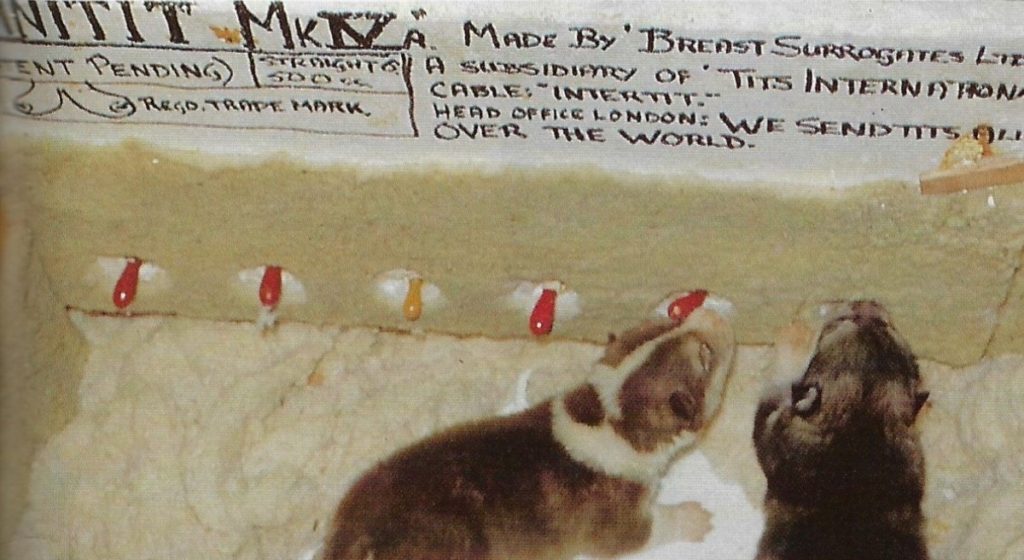
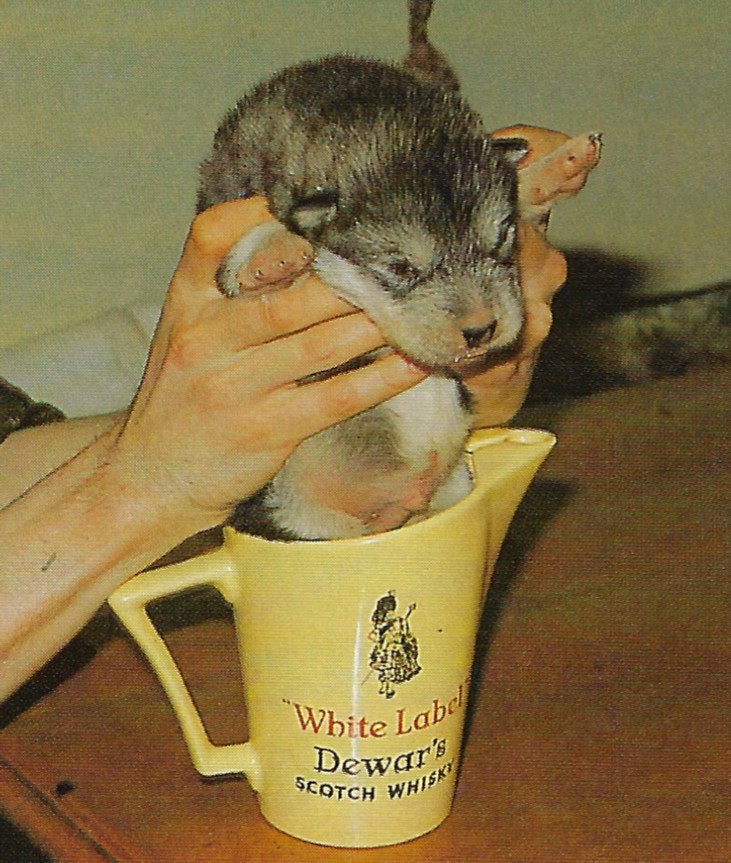
Ian “Spike” Sykes – Stonington, GA, 1968 & 1969
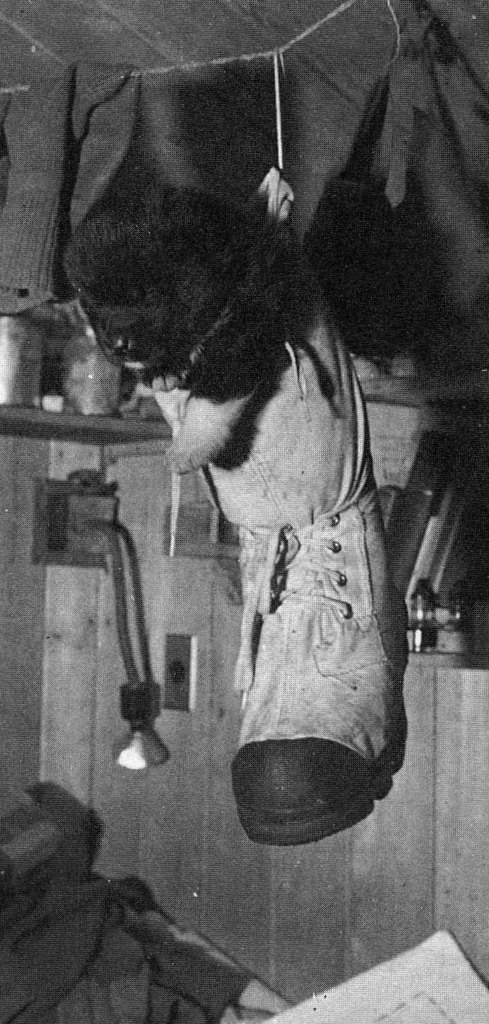
“Mukluk”
Naming as many as 30 puppies a year was a difficult task and frequently became the cause of fierce arguments.
This one was easy enough, though! She was born unexpectedly in a blizzard, and when we found her she was very cold. We popped her into one of our mukluk boots and hung it above the stove.
“Mukluk” grew up to be a splendid, though timid, breeding bitch.
Kevin Walton
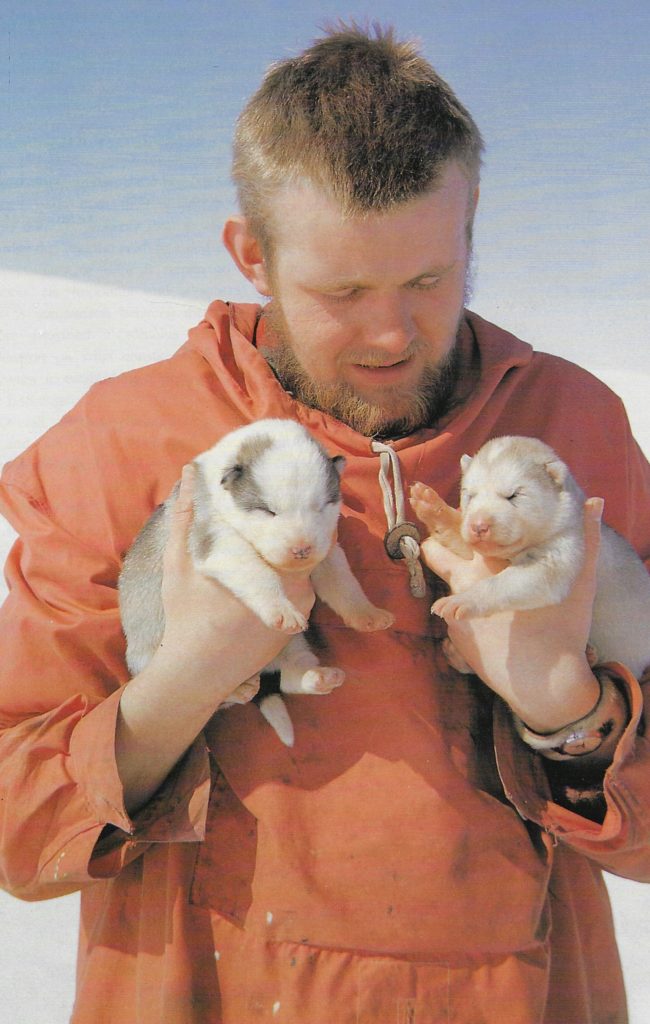
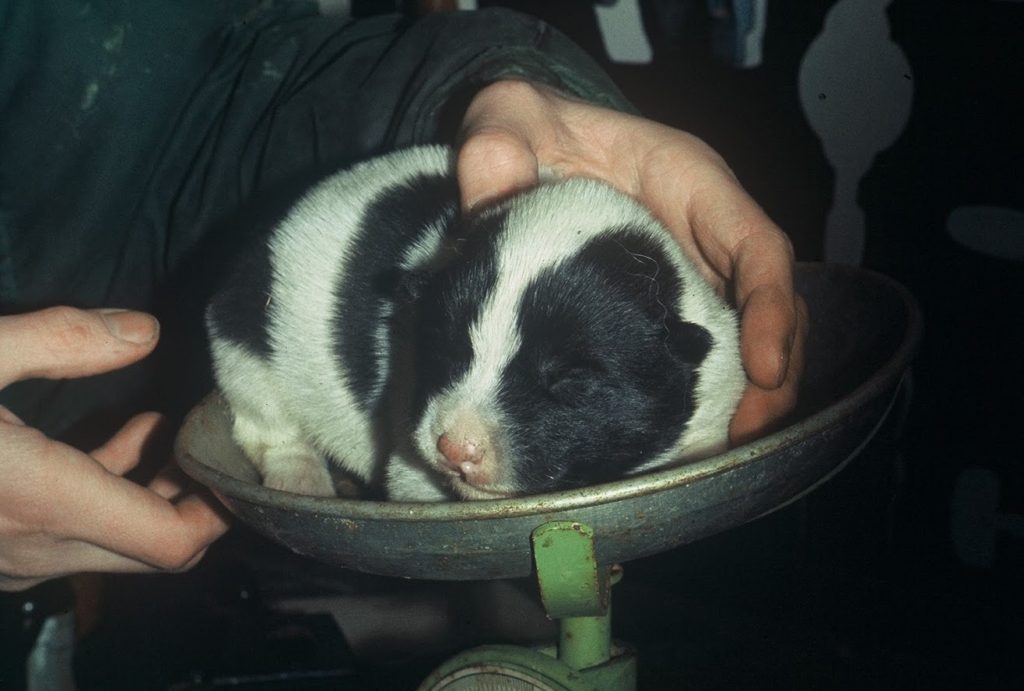
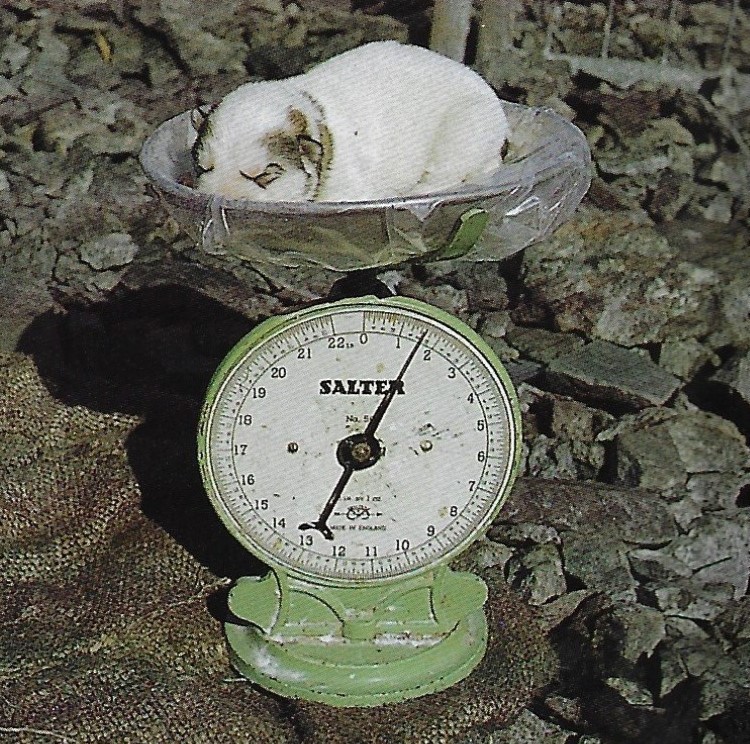
(Photo: Roger Owen)
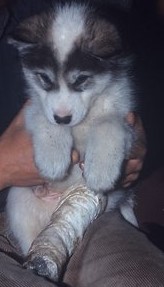
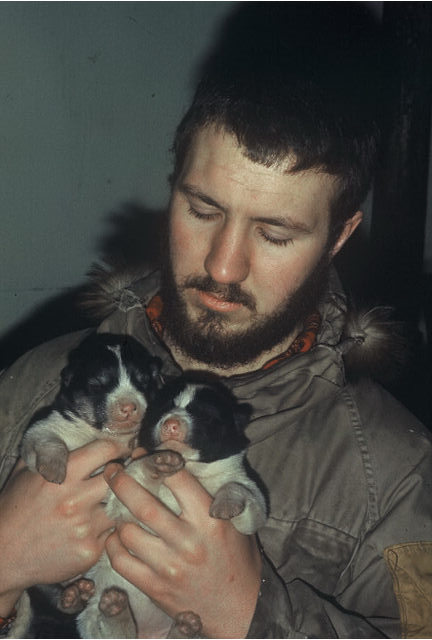
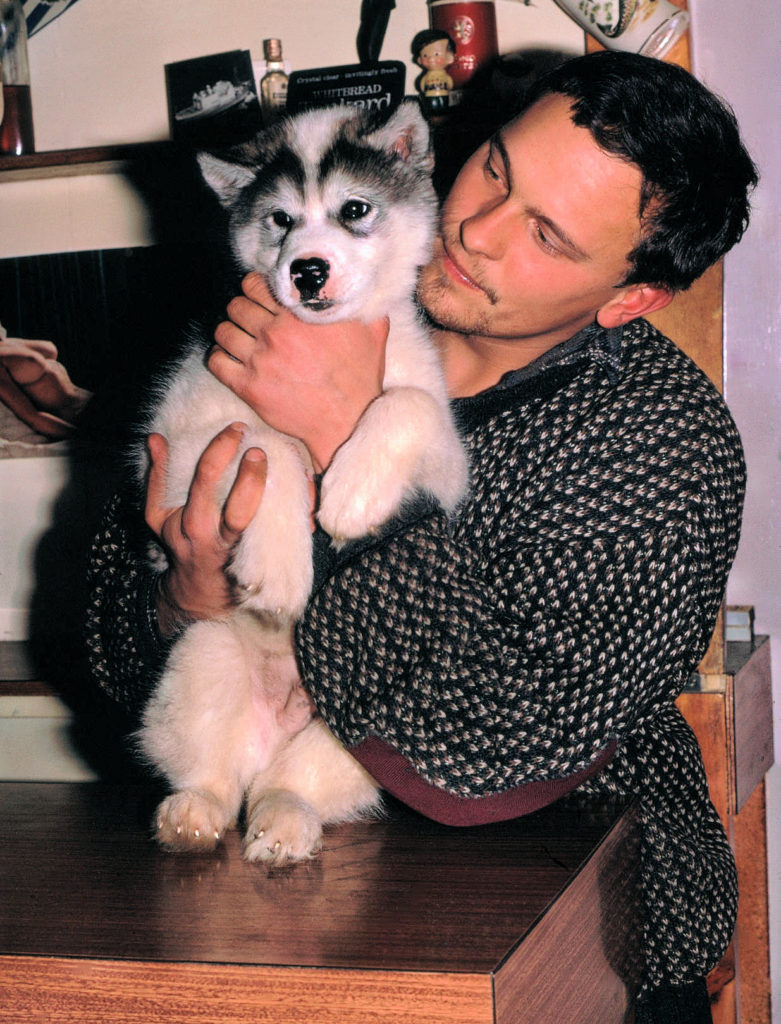

KOMATS . . . . KOMATS . . . . KOMATS . . . . KOMATS – Team Report 1966 – Neil Marsden
All Photos by Neil Marsden
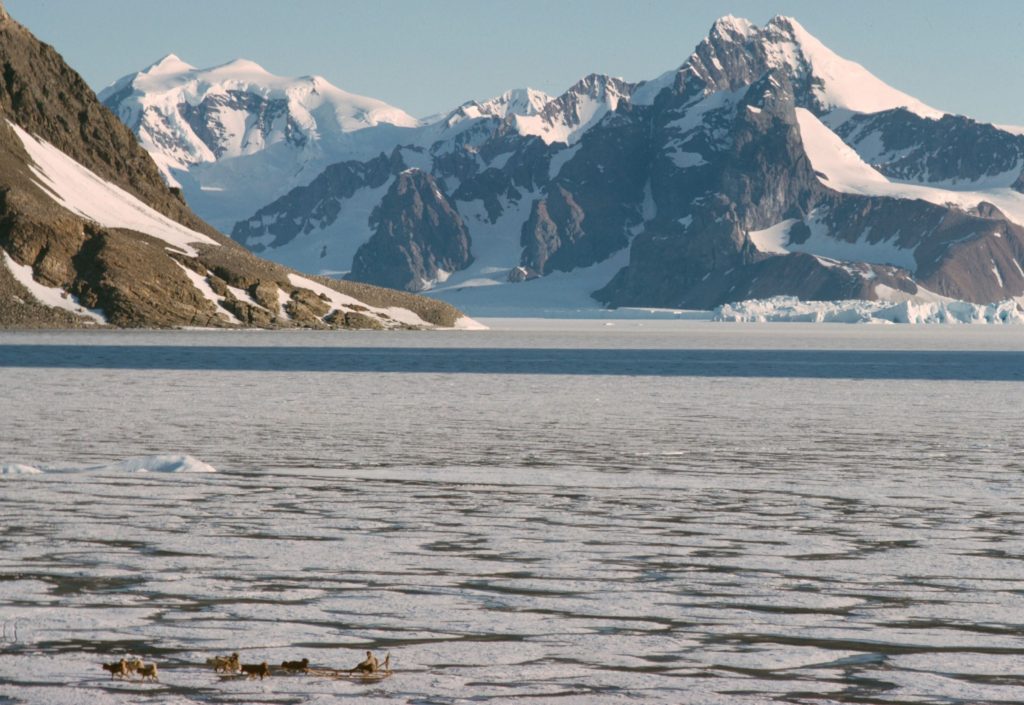
The seven dogs and two bitches I took over from John Tait at the beginning of last year have managed to stay alive, kicking and together all year. However time of partial disintegration is near. One is due for retirement to the Decrepit Huskies Home at Argentine Islands, his ‘kicking’ is no longer all it might be, and one for ignominious deportation to the same place, she’s useless.
Two of last year’s pups have been commandeered to take their places and so next year the 7:2 ratio will adhered to.
This leaves me, at present, well up with the current trend now seeping the Grahamland Plateau and associated areas of collecting as many dogs as possible into your team- I have 11. One of whom I have not yet run I must admit.
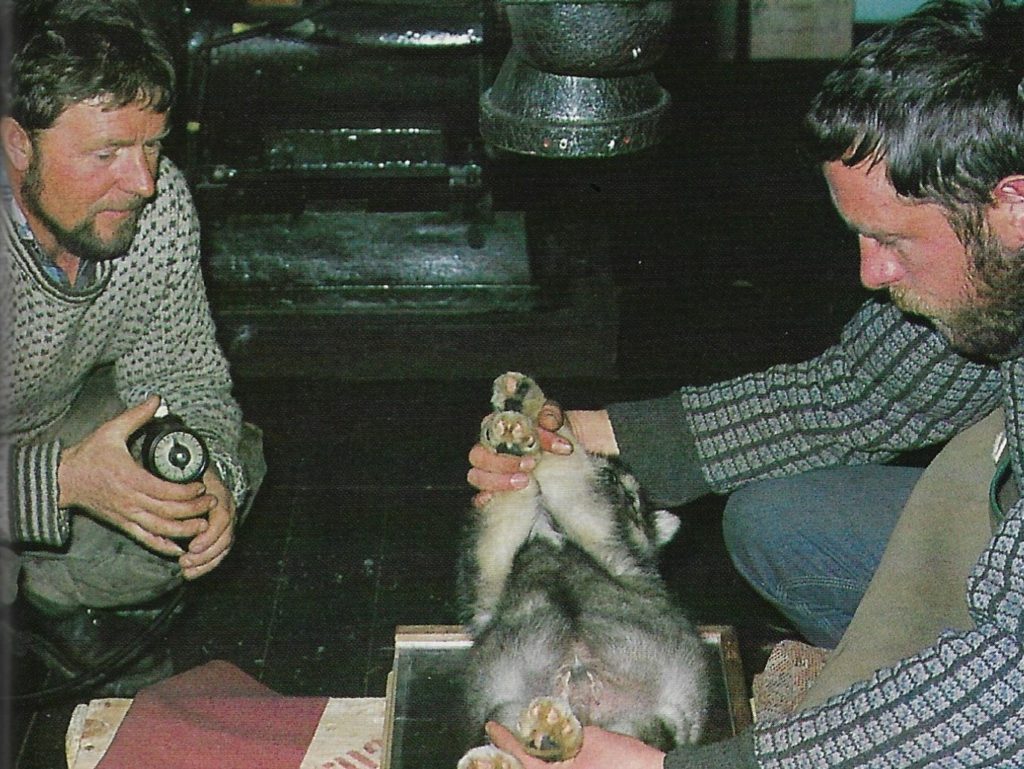
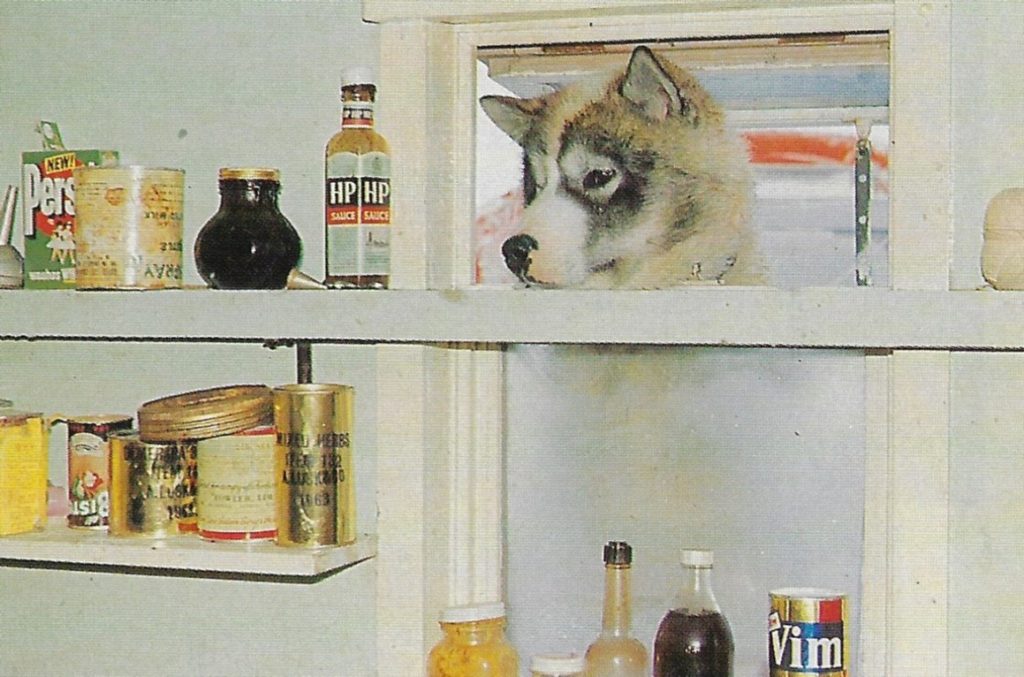
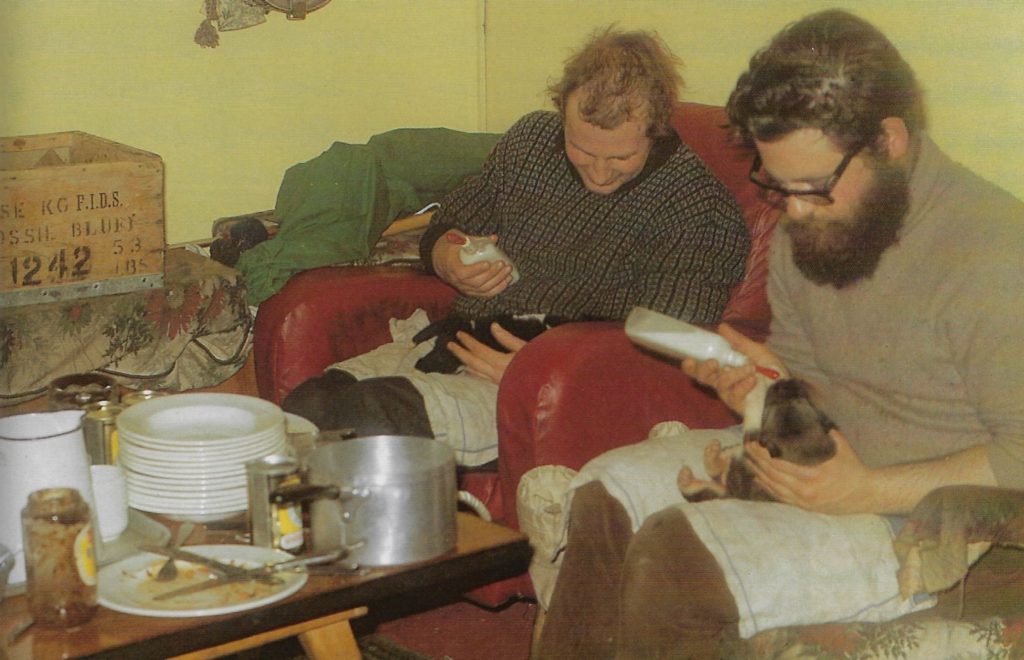
(Photo: Rob Collister)
